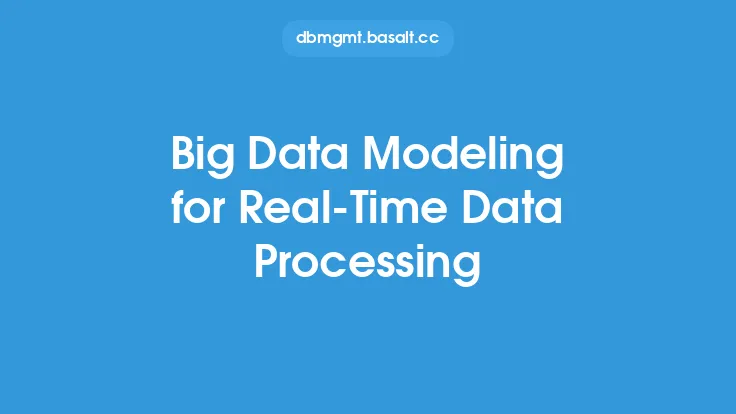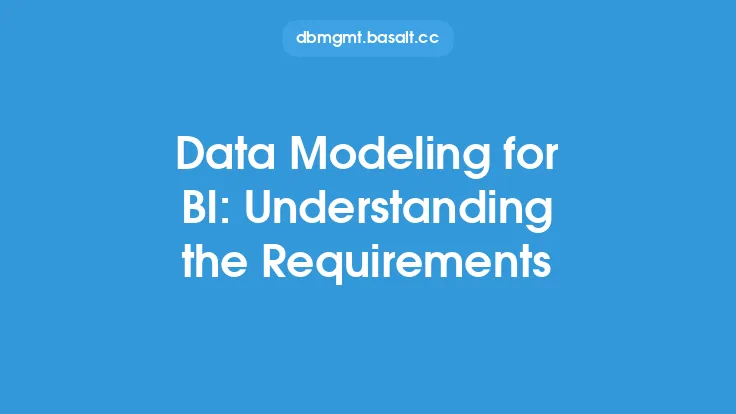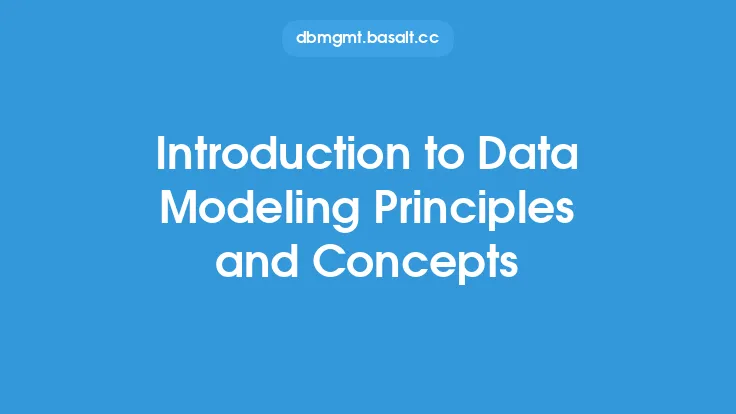Big data modeling is a crucial aspect of working with large and complex datasets, as it enables organizations to extract insights and value from their data. At its core, big data modeling involves creating conceptual, logical, and physical models of data to support business decision-making, analytics, and other data-driven activities. In this article, we will delve into the fundamental concepts of big data modeling, exploring the key principles, techniques, and best practices that underpin this discipline.
Introduction to Big Data Modeling Concepts
Big data modeling concepts are built on the foundation of traditional data modeling, but with some key differences. Traditional data modeling typically focuses on structured data, using entity-relationship diagrams (ERDs) and relational models to represent data. In contrast, big data modeling must accommodate a wide range of data types, including unstructured and semi-structured data, such as text, images, and videos. This requires a more flexible and adaptable approach to data modeling, one that can handle the complexity, variety, and velocity of big data.
Key Principles of Big Data Modeling
There are several key principles that underpin big data modeling. First and foremost, big data modeling must be scalable, able to handle large volumes of data and support high-performance analytics and processing. This requires a deep understanding of data distribution, partitioning, and parallel processing. Second, big data modeling must be flexible, able to accommodate changing data structures and schemas. This is particularly important in big data environments, where data is often sourced from multiple locations and in multiple formats. Third, big data modeling must be able to handle data quality and integrity issues, such as missing or duplicate data, and ensure that data is accurate and reliable.
Data Modeling Techniques for Big Data
There are several data modeling techniques that are commonly used in big data environments. One of the most popular is the entity-attribute-value (EAV) model, which is particularly well-suited to handling large amounts of unstructured and semi-structured data. The EAV model represents data as a set of entities, attributes, and values, allowing for flexible and dynamic data modeling. Another technique is the use of graph databases, which are designed to handle complex, interconnected data relationships. Graph databases are particularly useful for modeling social networks, recommendation systems, and other complex data relationships.
Big Data Modeling Tools and Technologies
There are a wide range of tools and technologies available to support big data modeling, from data modeling software and data integration platforms to big data storage solutions and analytics engines. Some of the most popular big data modeling tools include Apache Hive, Apache Pig, and Apache Spark, which provide a range of data modeling, processing, and analytics capabilities. Other tools, such as Talend and Informatica, offer data integration and data quality capabilities, while big data storage solutions like Hadoop and NoSQL databases provide a scalable and flexible platform for storing and managing large datasets.
Best Practices for Big Data Modeling
There are several best practices that can help ensure successful big data modeling. First and foremost, it is essential to understand the business requirements and goals of the organization, and to ensure that the data model aligns with these objectives. Second, it is crucial to involve stakeholders from across the organization in the data modeling process, including business users, data analysts, and IT professionals. This helps to ensure that the data model is comprehensive, accurate, and meets the needs of all users. Third, it is important to use a iterative and agile approach to data modeling, one that allows for rapid prototyping, testing, and refinement of the data model.
Data Modeling for Big Data Analytics
Big data modeling is a critical component of big data analytics, as it provides the foundation for analyzing and extracting insights from large and complex datasets. By creating a robust and scalable data model, organizations can support a wide range of analytics use cases, from descriptive and diagnostic analytics to predictive and prescriptive analytics. Big data modeling can also help to improve data quality and integrity, reduce data redundancy and duplication, and enhance data security and governance. By applying big data modeling concepts and techniques, organizations can unlock the full potential of their data, and drive business innovation and competitiveness.
Conclusion
In conclusion, big data modeling is a complex and multifaceted discipline that requires a deep understanding of data modeling concepts, techniques, and best practices. By applying these principles and techniques, organizations can create robust and scalable data models that support business decision-making, analytics, and other data-driven activities. As the volume, variety, and velocity of big data continue to grow, the importance of big data modeling will only continue to increase, making it an essential skill for data professionals and organizations seeking to extract insights and value from their data.





